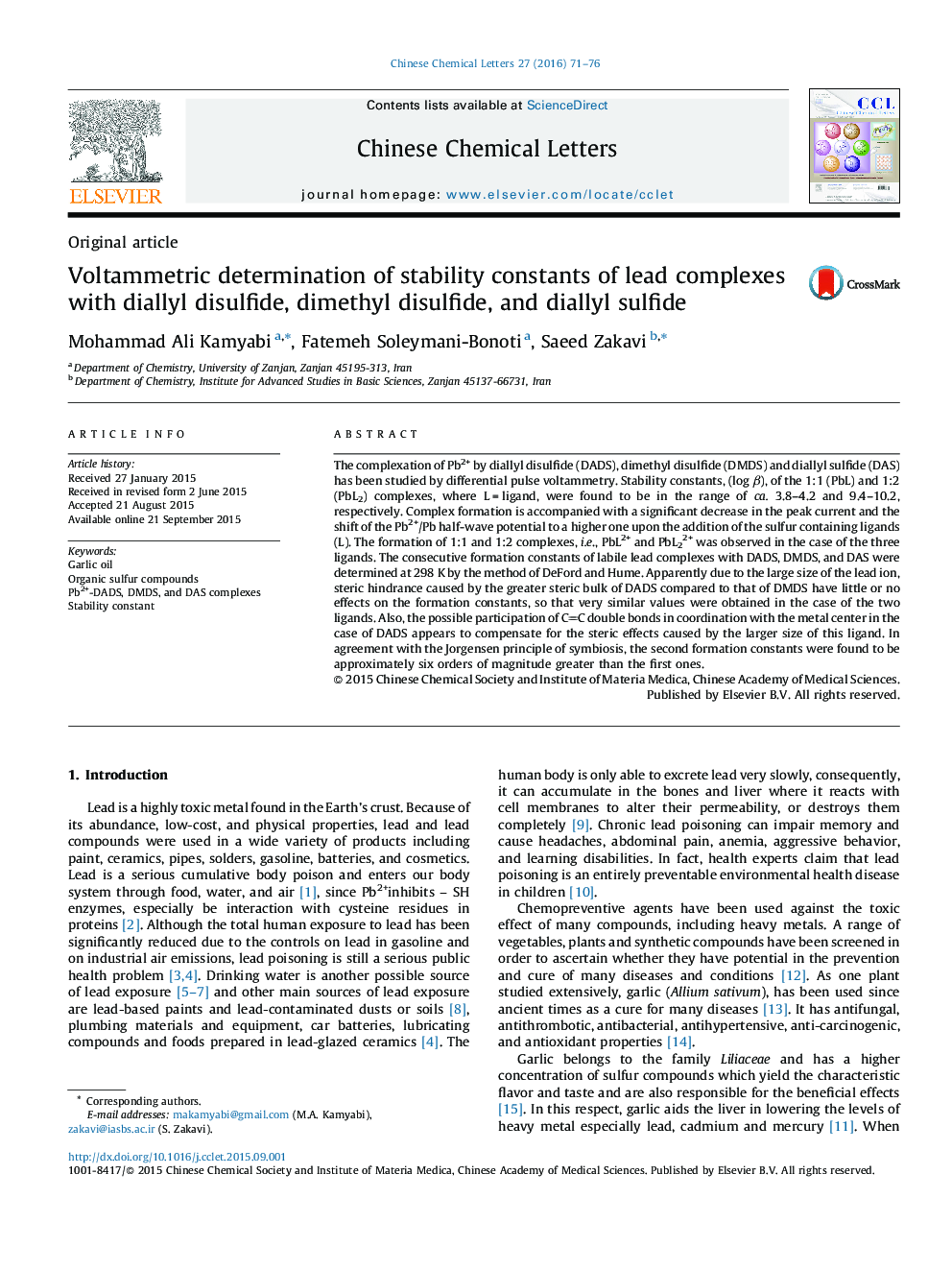| Article ID | Journal | Published Year | Pages | File Type |
|---|---|---|---|---|
| 1254575 | Chinese Chemical Letters | 2016 | 6 Pages |
The complexation of Pb2+ by diallyl disulfide (DADS), dimethyl disulfide (DMDS) and diallyl sulfide (DAS) has been studied by differential pulse voltammetry. Stability constants, (log β), of the 1:1 (PbL) and 1:2 (PbL2) complexes, where L = ligand, were found to be in the range of ca. 3.8–4.2 and 9.4–10.2, respectively. Complex formation is accompanied with a significant decrease in the peak current and the shift of the Pb2+/Pb half-wave potential to a higher one upon the addition of the sulfur containing ligands (L). The formation of 1:1 and 1:2 complexes, i.e., PbL2+ and PbL22+ was observed in the case of the three ligands. The consecutive formation constants of labile lead complexes with DADS, DMDS, and DAS were determined at 298 K by the method of DeFord and Hume. Apparently due to the large size of the lead ion, steric hindrance caused by the greater steric bulk of DADS compared to that of DMDS have little or no effects on the formation constants, so that very similar values were obtained in the case of the two ligands. Also, the possible participation of CC double bonds in coordination with the metal center in the case of DADS appears to compensate for the steric effects caused by the larger size of this ligand. In agreement with the Jorgensen principle of symbiosis, the second formation constants were found to be approximately six orders of magnitude greater than the first ones.
Graphical abstractPolarizability of complexation of lead by DADS, DMDS and DAS.Figure optionsDownload full-size imageDownload as PowerPoint slide
